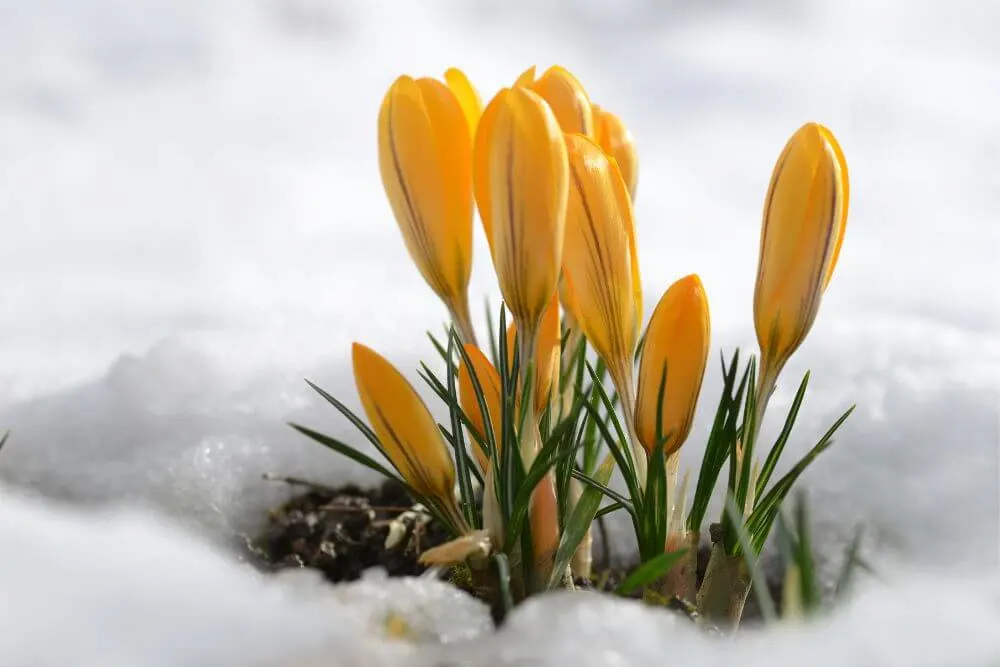
Table of Contents
- 1 The Spring Celebration of Imbolc
- 2 What is Imbolc?
- 3 When is Imbolc celebrated?
- 4 Imbolc Meanings
- 5 How to pronounce Imbolc?
- 6 Imbolc Blessings
- 7 How to celebrate Imbolc?
- 8 How is Imbolc celebrated? Past and Present Guide
- 9 How is Imbolc celebrated today?
- 10 Imbolc in Ireland
- 11 Imbolc FAQ
- 12 Irish Gods and Irish Goddesses
The Spring Celebration of Imbolc
Imbolc is an ancient festival celebrating the change in seasons from winter to spring. It has ancient origins predating Christianity and also probably the arrival of the Celts in Ireland. Recently there has been more awareness about this seasonal celebration and its popularity has grown as people wish to reconnect more with nature, as well as embrace the mix between old Celtic and Christian traditions in Ireland.
What is Imbolc?
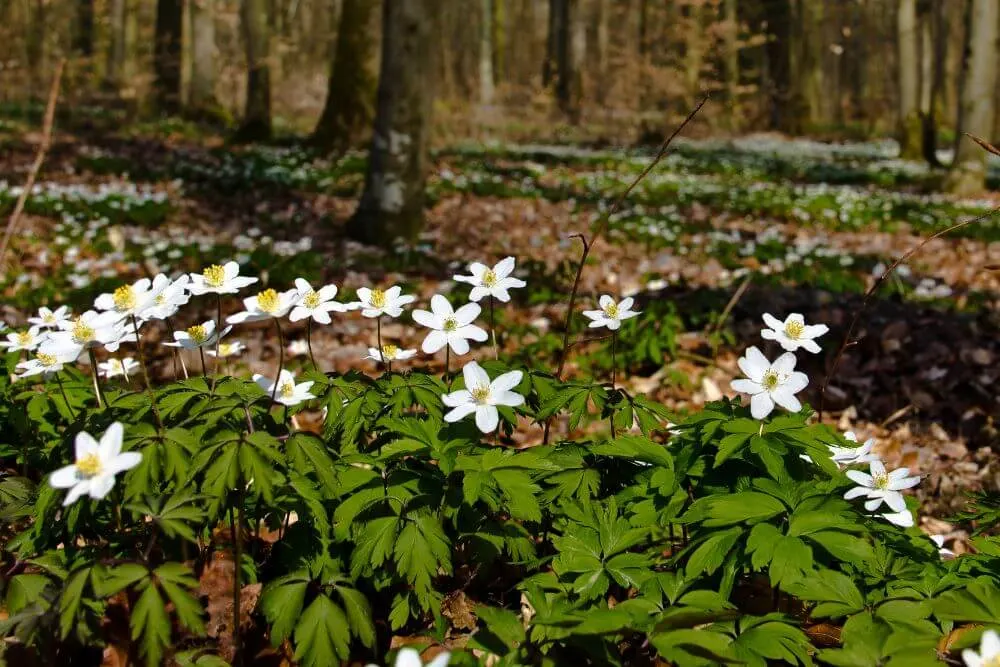
Imbolc (which is sometimes spelled as Imbolg), is an ancient tradition that occurs midway between the winter solstice and the spring equinox. It marks the beginning of the spring and is one of four cross quarter day festivals that were spread between the winter solstice, spring equinox, summer solstice and autumn equinox. The other cross quarter days are Beltane (1 May), Lughnasadh (1 August) and Samhain (1 November) marking the beginning of the ancient Celtic New Year.
The Celtic Goddess Brigid has a strong connection with Imbolc and the seasonal change that occurs around this time. Christianity later incorporated Brigid into their teaching and it is thought that she became known as Saint Brigid.
When is Imbolc celebrated?
Imbolc is celebrated from sunrise on 1 February to sunset on 2 February. In ancient times, the first of the rituals and traditions associated with the festival would occur on the Eve of Imbolc.
Imbolc Meanings
What is the meaning of Imbolc? There have been several different suggestions as to the Imbolc meaning. Two of the many theories behind the meaning are related to sheep and the cycle of life.
Three Suggested Imbolc Meanings
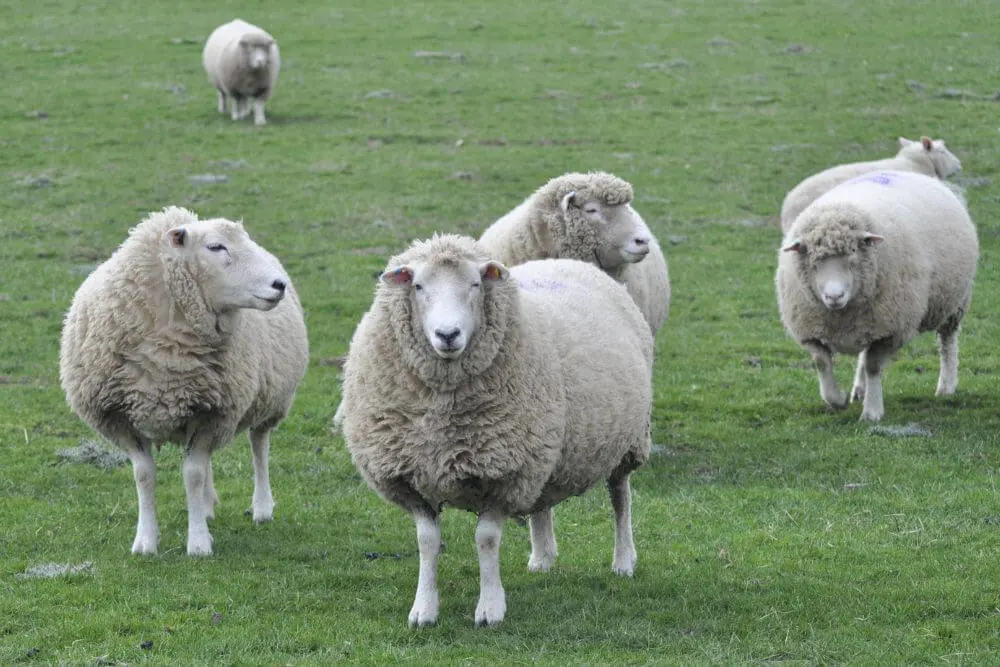
One suggestion about the meaning of Imbolc relates to the old Irish term i mbolg, which translates roughly as “in the belly”. This is thought to refer to ewes, which at this time of year would be heavily pregnant and about to give birth to their lambs.
Other scholars have suggested that Imbolc comes from the old Irish oilmelc, a term that could be used to describe ewe’s milk as the animals would start lactating around this time to feed their young. Milk is therefore often connected with this celebration.
Another alternative origin of Imbolc stems from the old Irish word folcaim meaning to clean or purify. The Romans also celebrated a similar ritual around this time called Lupercalia. Did you know? The month of February gets its name from the cleansing instruments, februa, used as part of the ancient Roman festival of Lupercalia).
How to pronounce Imbolc?
If you are wondering about the sound of the Imbolc pronunciation, it should sound like this. This is a useful audio clip on Wikipedia that might help.
Imbolc Blessings

There are many possible goodwill blessings that you could wish someone for Imbolc. It is a time of joy, rebirth, reawakening and purifying. Here are a few examples of appropriate blessings to suit the occasion of Imbolc.
May flowers always line your path and sunshine light your day,
May songbirds serenade you every step along the way,
May a rainbow run beside you in a sky that’s always blue,
And may happiness fill your heart each day your whole life through.
May the blessings of light be on you,
Light without and light within,
May the blessed sunlight shine on you till it glows like a great peat fire.
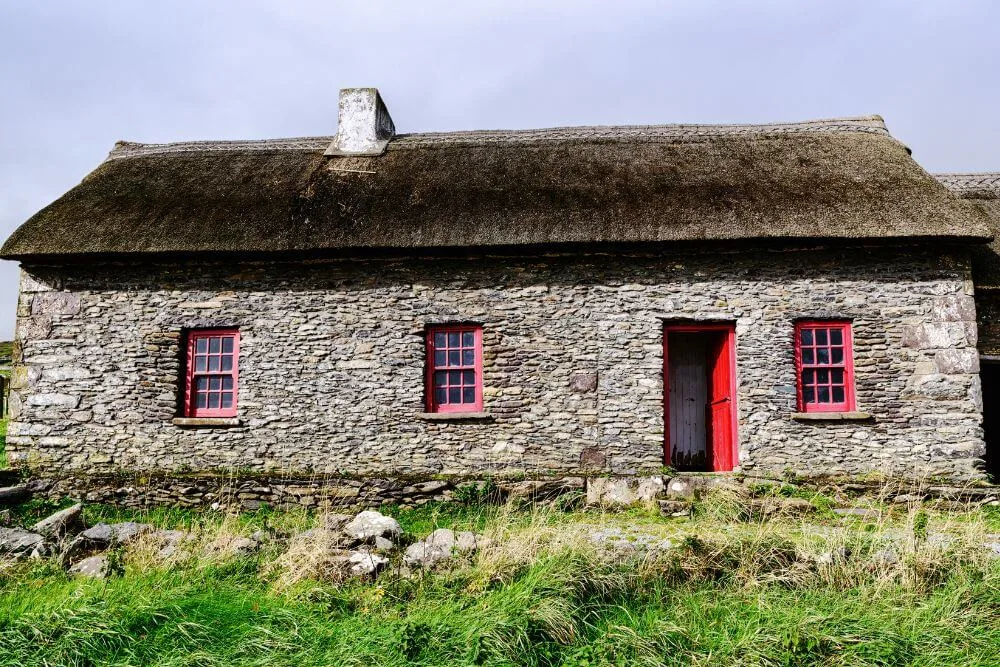
St Brigid’s Blessing
May Brigid bless this house wherein you dwell
Bless every fireside every wall and door
Bless every heart that beats beneath its roof
Bless every hand that toils to bring it joy
Bless every foot that walks its portals through
May Brigid bless the house that shelters you
More Irish blessings can be found here.
How to celebrate Imbolc?
There are many different Imbolc traditions that can easily be replicated without too much trouble. If you are thinking of celebrating Imbolc, why not try one or two of the suggestions below. (More information about the history and the origins are given further down the article.)
Ways to celebrate Imbolc
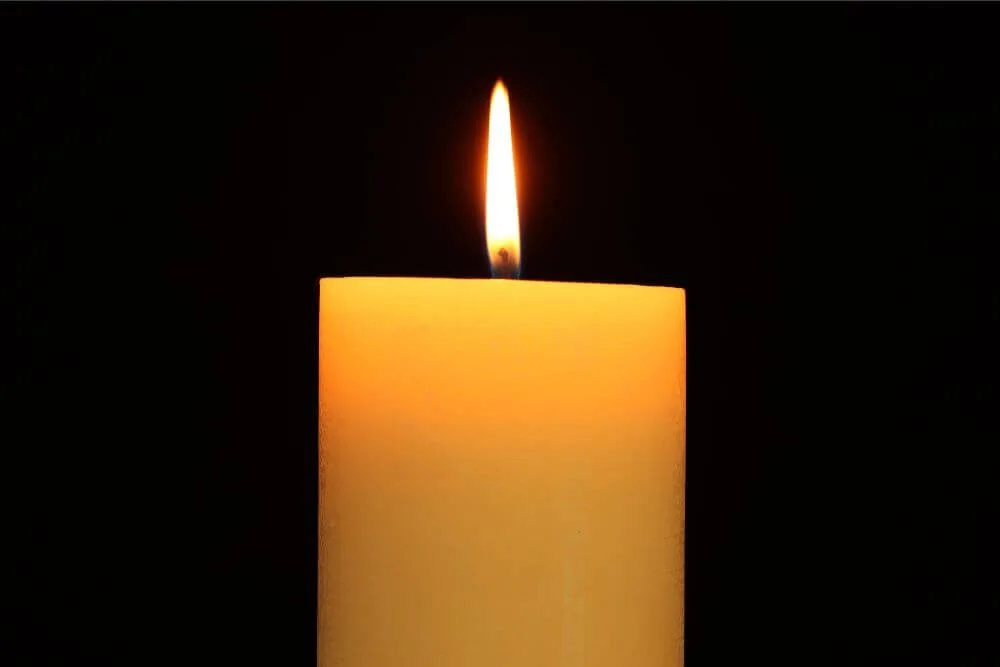
- Fire and light are commonly associated with Imbloc so one of the most traditional ways to celebrate would be to mark the occasion of Imbolc with a fire or candles.
- Make your own doll out of straw, rushes, oats or equivalent is a creative way to mark the traditional celebration. There are different videos and tutorials available online that can help guide you on how to do this.
- It is also possible to create a small altar for Brigid with candles, perhaps a bowl of milk or some woolen items to symbolize the connection with sheep.
- Bake the traditional bread of Bannock, which was baked over the hearth and commonly eaten on the eve of Imbolc may be another appropriate way for you to mark the occasion.
- If you want to continue being creative, then you could also attempt to make a Saint Brigid’s Cross and hang it in your home. Instructions on how to make one of these traditional crosses are available here along with some other traditions.
- Both the Goddess Brigid and Saint Brigid have strong associations with healing, especially with water. A visit to a holy well or any available stream or river may be a suitable way for you to mark this occasion and be part of your own purifying ritual.
- If you happen to be on the island of Ireland around Imbolc, why not take part in one of the Imbolc events there such as the Biddy’s Day Festival or the Imbolc International Music Festival? Other festivities are held at other locations outside of Ireland as well, such as the Imbolc Festival at Marsden in West Yorkshire in England too.
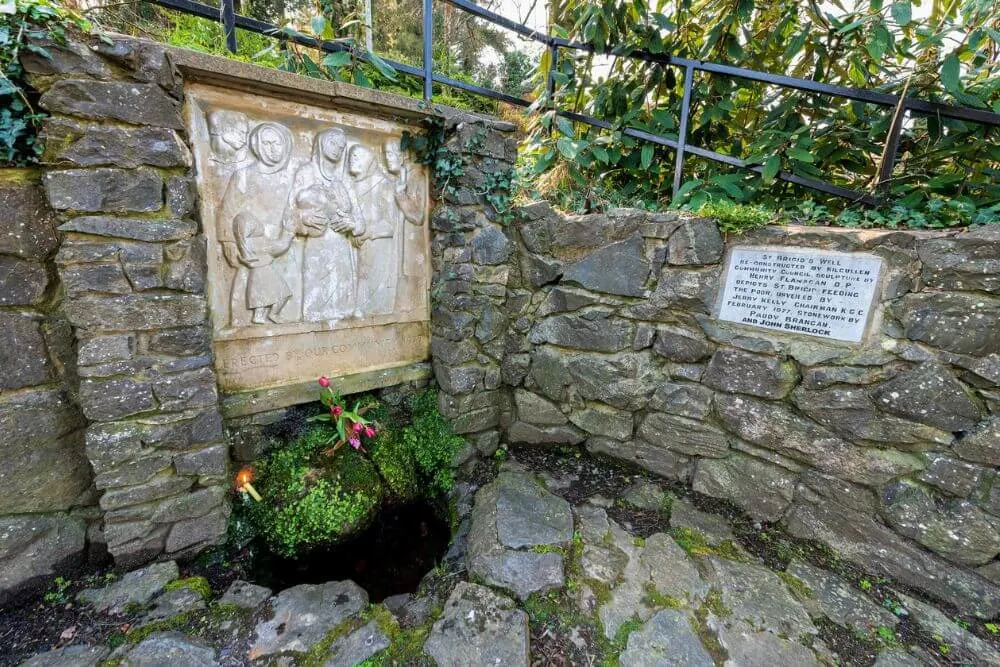
How is Imbolc celebrated? Past and Present Guide
Details about Imbolc history and traditions are relatively scarce in early literature. It is first thought to have been first recorded in Irish literature dating back to the 10th century. However, this important celebration had much earlier origins.
Imbolc in Neolithic Times
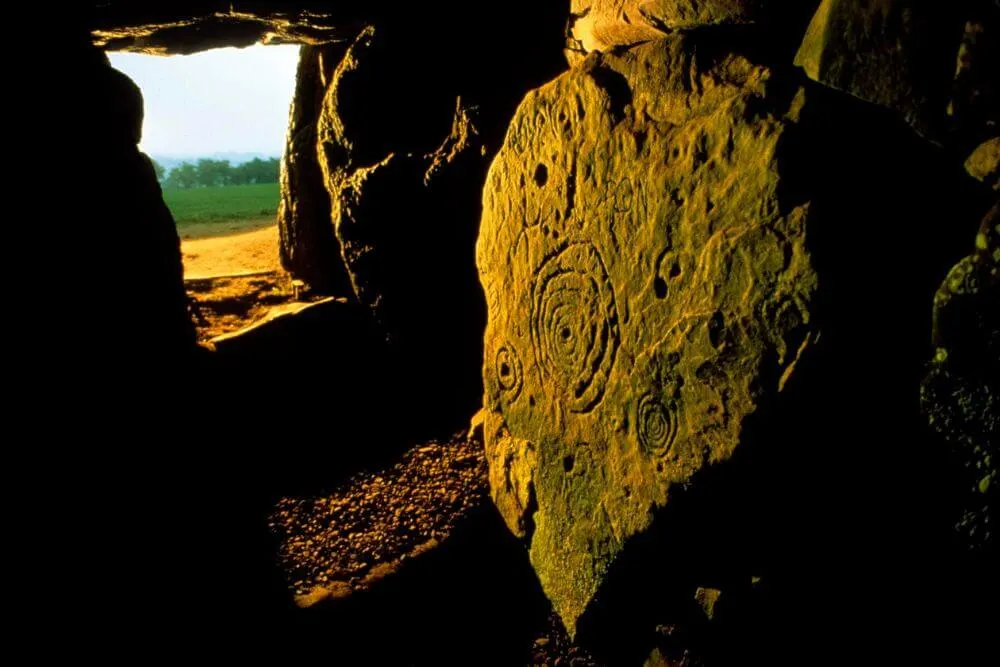
In the Neolithic times (before the Celts arrived in Ireland), the solar events were important markers for the agricultural year. At least two ancient monuments in Ireland have connections with pagan Imbolc and had it as a seasonal marker in their ancient agricultural calendar.
Around Imbolc (and Samhain), sunlight enters through the passageway of the Mound of Hostages on the Hill of Tara, County Meath. This tomb was built around the same time as Newgrange in the Boyne Valley, County Meath roughly 5000 years ago.
One of the cairns, Cairn L, at Loughcrew in County Meath is also aligned with the Imbolc and Samahin sunrise. (This cairn cannot be visited by the public as it is on private land.)
The exact significance of this sunrise alignment of these ancient monuments is not completely known or understood, but this transition period between the harsher winter weather and the milder spring would have been an important marker in the calendar for agriculture, indicating the need to soon sow crops.
Goddess Brigid Imbolc Connections
The Celtic Goddess Brigid (also sometimes known as Brighid, Bríd or Brigit) is a triple goddess associated with spring, the cycle of life, fertility and birth. Some of her other attributes are healing, poetry and smithcraft. She often represents light and is occasionally depicted as having flames or fire in her hands or above her head. Brigid the goddess is sometimes referred to as the Imbolc Goddess.
(Discover more information about the Goddess Brigid in our Gods and Goddess guide)
It is not difficult to see the connection to this early springtime part of the year, when the days become longer and there is more light and where there is new growth not only in the vegetation, but also the animals such as sheep which would have been exceptionally important in ancient times.
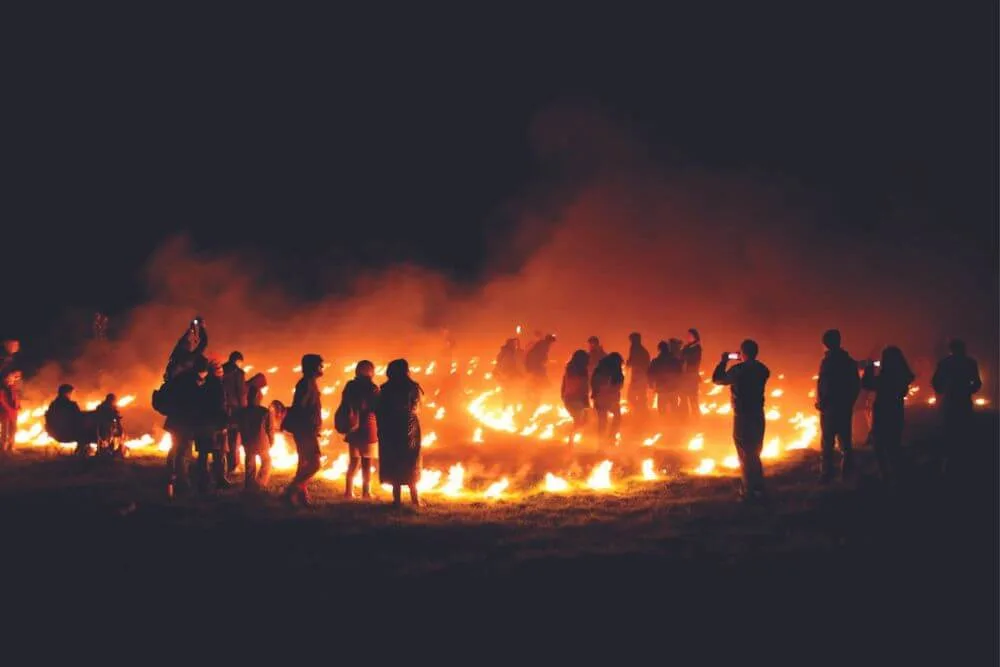
Traditionally, fires would have been lit in prominent places such as hilltops on Imbolc. These would have been used to give thanks to Brigid for the previous year and as a sign of hope that the upcoming year starting with the Celtic spring would be a prosperous one.
On the eve of Imbolc, the first of the usual rituals for the festival would begin. An effigy of the Goddess Brigid would have been made from gathered oats or rushes and clothed. This doll-like Brigid, known in Irish as a Brídeóg or (young Bríd), would have been placed in a basket and brought from house to house by young girls, typically the unmarried ones.
This doll would have been placed in a specially made Brigid’s bed next to the hearth at night along with food and drink for the visit from Brigid. Strips of cloth typically in red or blue (known as Bhrat Bhríde strips) would have been placed for Brigid to bless. These textile items would then have been used as special bandages throughout the year for their protective and healing powers.
If a search through the ashes in the hearth in the morning revealed a mark from Brigid it would be seen as a good omen. However, if there was no discernable mark, the outlook for the coming year was not so optimistic.
(Note: Some of the traditions developed around effigy to the Goddess Brigid probably predate St. Brigid. However, these were also carried out in later times to integrate into the prayers and worship to St. Brigid.)
Saint Brigid Imbolc Connections
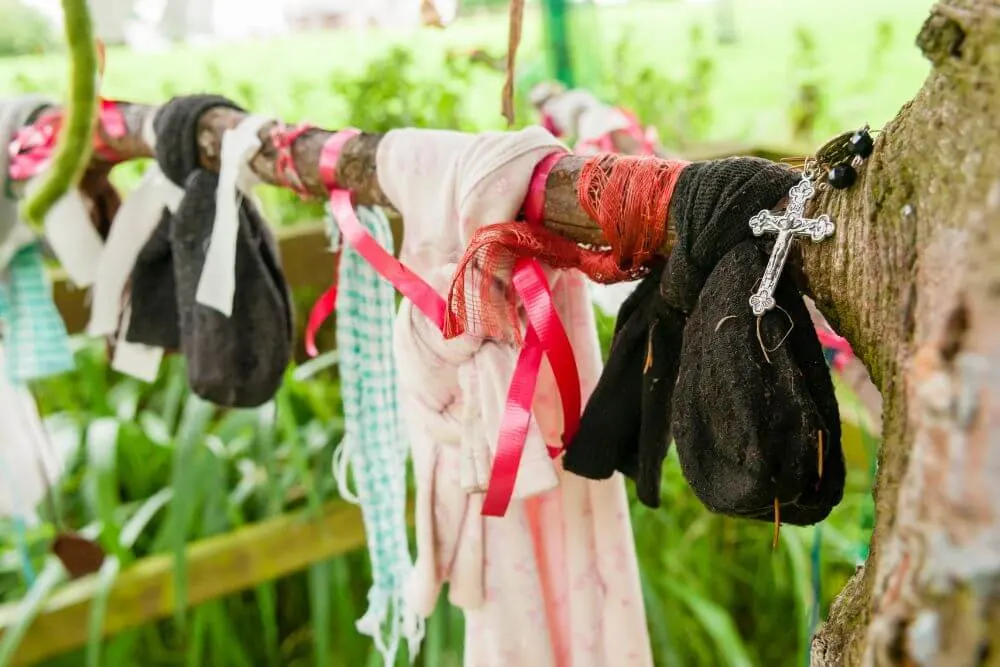
The belief in the Goddess Brigid in pre Christian Ireland was particularly strong. During the rise of Christianity in Ireland, it is thought that rather than banishing the idea of the Celtic Goddess Brigid, she was instead incorporated into the Christian teachings into the form of Saint Brigid (sometimes spelled as Brigit, Bridget or Bríd). Even the feast day of Saint Brigid falls on 1 February, the same day as Imbolc, the traditional start of spring and the biggest celebration of Brigid in the entire year.
Like the Goddess, Saint Brigid is also associated with milk, fire and water. Saint Brigid became the saint of nuns, women, birth, babies and midwifery, so the intricate connections with the Goddess Brigid as a healer with strong connections to fertility (some say the Fertility Goddess) and women continues to be perpetuated.
St. Brigid is one of three patron saints of Ireland, the other two being male (St. Patrick and St. Columba or St. Colmcille). Some scholars suggest that Saint Brigid was born close to Dundalk in County Louth during the 5th century and was converted to Christianity through Saint Patrick. She is often known as Saint Brigid of Kildare as she established the first nunnery in Ireland in the county of Kildare.
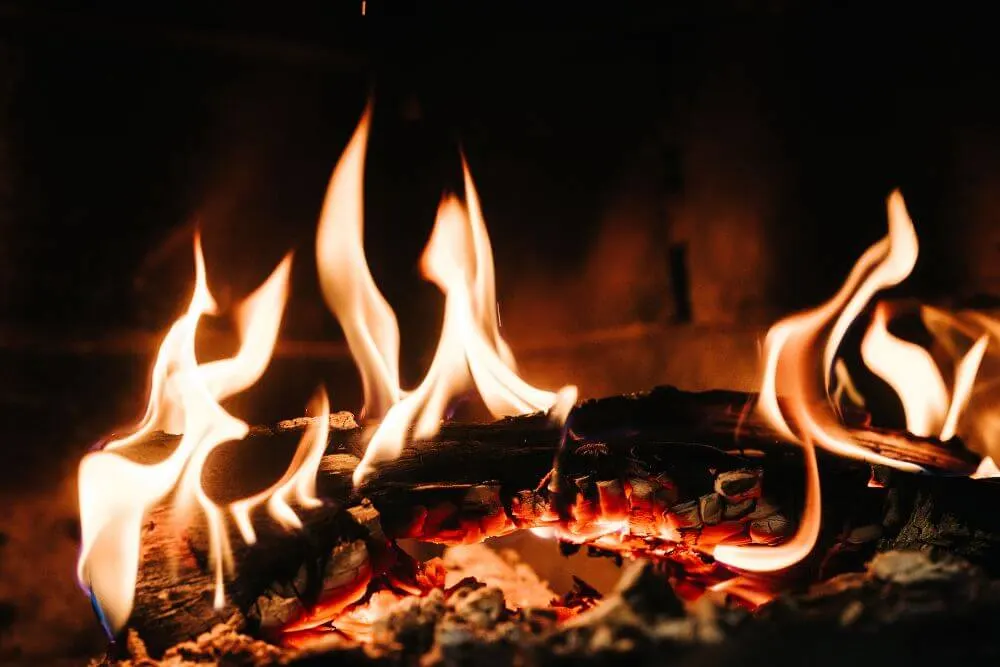
The connection to fire and Saint Brigid survived through the ages and one tale tells of a fire lit in honor of St. Brigid by the nuns in Kildare that burned for 500 years. During that time, only women were allowed to tend to the flames and no ash is said to have been produced. Some tales say that it may have been Cromwell’s soldiers who extinguished the flames during the 16th century.
In 1993, a fire was once again lit for Saint Brigid, this time in the Market Square of Kildare by the Brigidine Sisters. It is used as a symbol of peace. The Brigidine sisters have kept the flame burning since then and it is now in the Brigid Room of the Solas Bhride Centre in Kildare Town.
What is a Saint Brigid’s Cross?
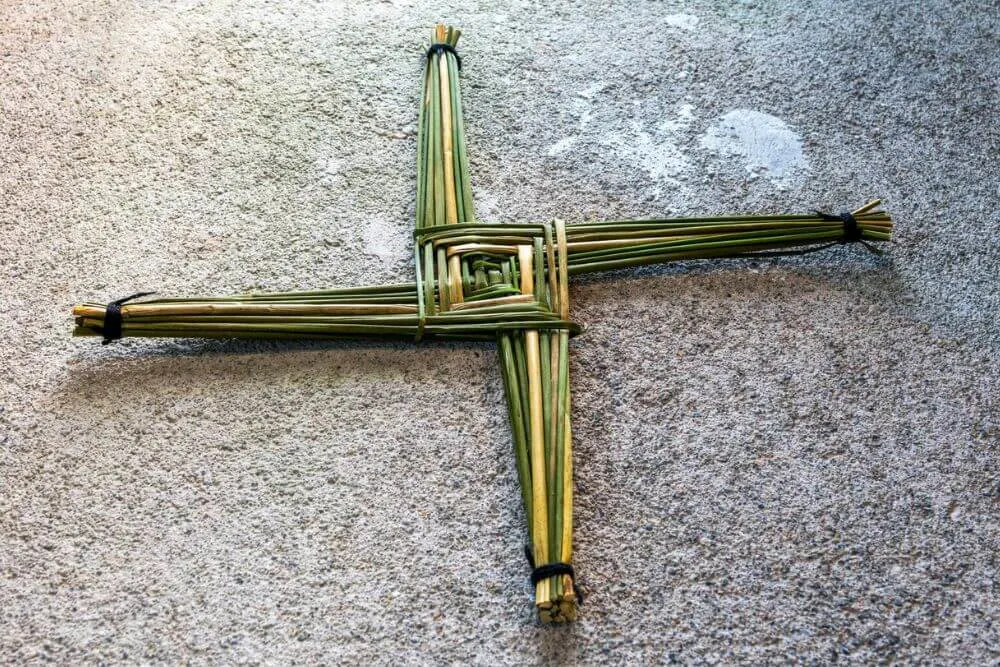
A Saint Brigid’s Cross is created by weaving rushes together. Traditionally, these crosses were made on the saint’s feast day and were hung in the home, typically by the front door for protection against fire, sickness and other misfortunes. Each year the cross would be replaced by a new one.
Is there such a thing as an Imbolc Cross?
While this is seen as a very Christian symbol today, it is possible that the origins of this cross possibly date back much earlier. It has been suggested that it is not a Christian cross, but a symbol of the sun, which would have been associated with the changing seasons around Imbolc.
Imbolc and the Weather
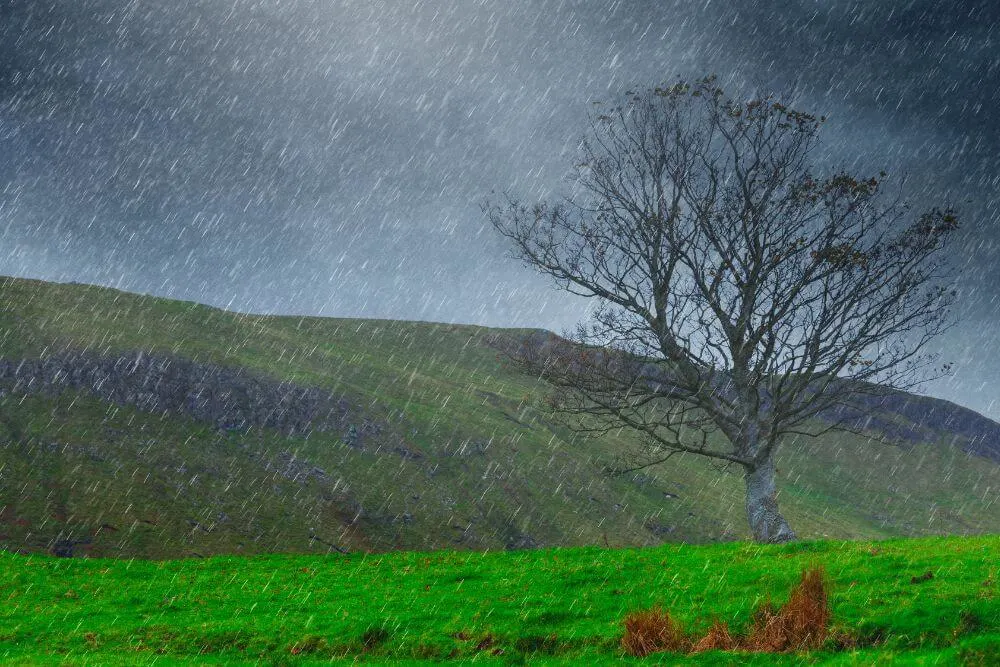
There are many traditions, not just in Ireland, about weather divination around Imbolc. Some tales say that when the weather is fine on Imbolc, it is actually a bad sign for the coming weather.
According to one such story, the weather on this day will only be good if the Cailleach (hag or witch) needs to collect a lot more timber to get her through a longer winter. If the weather is poor or bad, the winter won’t last too much longer.
While Imbolc and Groundhog Day are not connected (Groundhog Day was established by a newspaper in Pennsylvania in the late 19th century), there are strong traditions of observing nature and animals at this time to look for indications of what the weather will be like. In Germany, people watched badgers to see if they came out from their winter retreats. Hedgehogs were also used as another indicator species in some places.
How is Imbolc celebrated today?
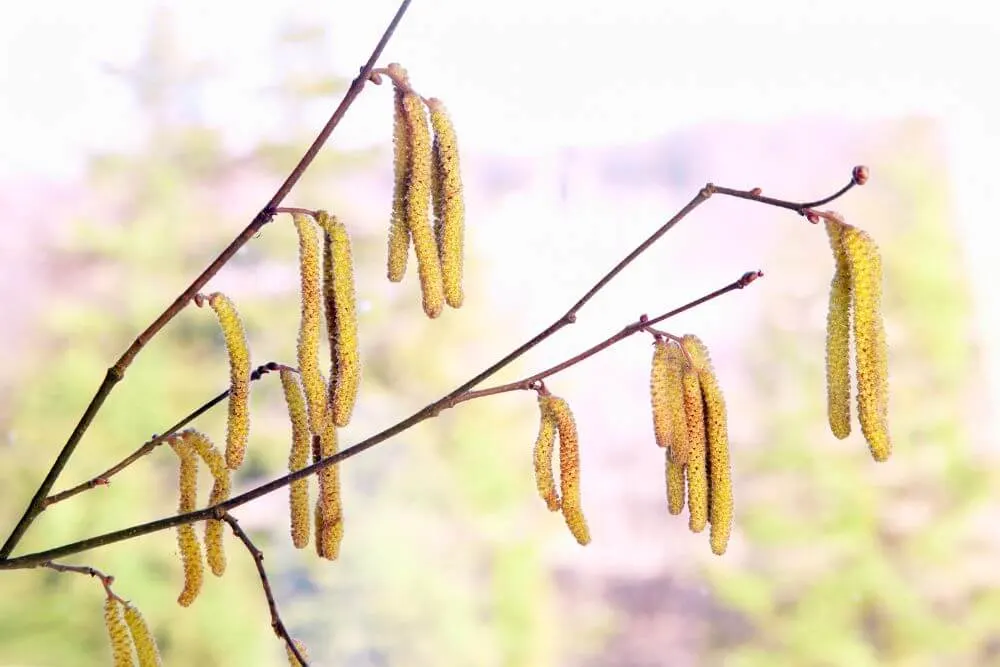
Many people now see Imbolc as a way of getting in touch with nature again. Changes in the trees and flowers at this time of year (depending of course on where you live) act as reminders to reconnect to the world around us. In Ireland, there is often a feeling of spring in the air from early spring, even though spring in Ireland doesn’t officially start until March.
Other people opt to see Imbolc as a part of an annual cleansing ritual as they start their spring cleaning around this time. This can also be connected with Candlemas, the Christian holiday that is associated with purification and cleansing.
Replacing a St. Brigid’s Cross is a common way that people tend to mark Imbolc and the feast of St. Brigid. Attending a mass in a church is another.
Imbolc Neopagan Celebrations
For neopagans, Imbolc is also an important time. It is celebrated on 1 February for those in the Northern Hemisphere, while those in the Imbolc Southern Hemisphere celebrations are marked on 1 August (or on a date close to the full moon). Fire rituals feature frequently in the celebrations.
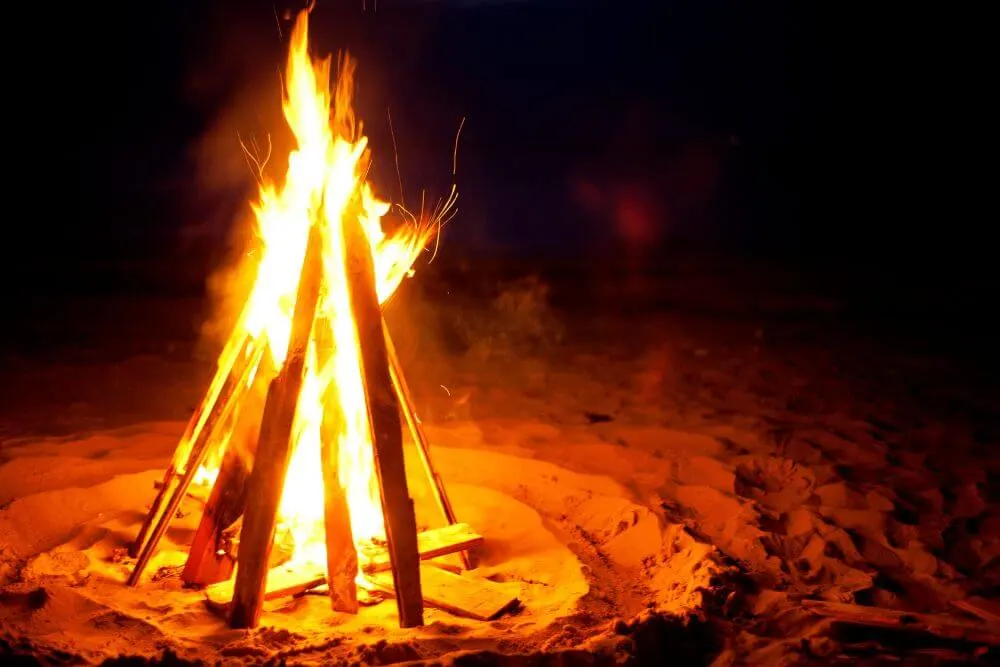
Imbolc Wicca Celebrations
In the Wicca religion, the triple Goddess Brigid plays a large role. Around Imbolc many special rituals for females take place at this time. Sometimes Imbolc is celebrated at a time closer to the start of spring where the followers live.
Imbolc in Ireland
In Ireland, many different Imbolc and St. Brigid traditions developed in different parts of the country. This is an interesting 10 minute podcast from The Almanac of Ireland that delves into the variety of rituals from the past that were documented as part of The School’s Collection from the 1930s.
More recently there has been a revival of some of the older traditional ways of celebrating St. Brigid, the Goddess Brigid and Imbolc.
In Killorglin and some other areas in mid Kerry in Ireland, a Biddy’s Day Festival now takes place. This event is one that mixes Celtic and Christian traditions in the form of
Imbolc and St. Brigid. The event includes a parade, as well as some demonstrations about how to make Imbolc crafts such as traditional straw hats, St. Brigid’s Crosses and the Brídeóg doll.
In Derry in Northern Ireland, the Imbolc International Music Festival takes place to mark this annual calendar event. This musical event brings together musicians from several different genres to create a superb festival. As well as performances, there are also possibilities to get involved and improve some of your existing traditional music skills in the areas of fiddle, button accordion, harp or uilleann pipes.
Mark the Imbolc Date!
From St. Brigid’s Day and Imbolc 2023 onwards, Ireland will have a new national public holiday on 1 February to mark the occasion of Imbolc and Saint Brigid. This means that many shops and attractions will be closed or have different opening hours. Schools and public services are typically closed so don’t get caught out and plan ahead!
Imbolc FAQ
What are the main Imbolc Symbols?
The main symbols of Imbolc are:
- Fire
- Milk
- Sheep
- Brídeóg, Bríd Óg or Brigid Dolls
- Brannock
- St. Brigid’s Crosses
Fire
Both the Goddess Brigid and Saint Brigid are typically associated with fire. Fire can be thought of as a connection with light, longer days and the ending of winter.
Milk
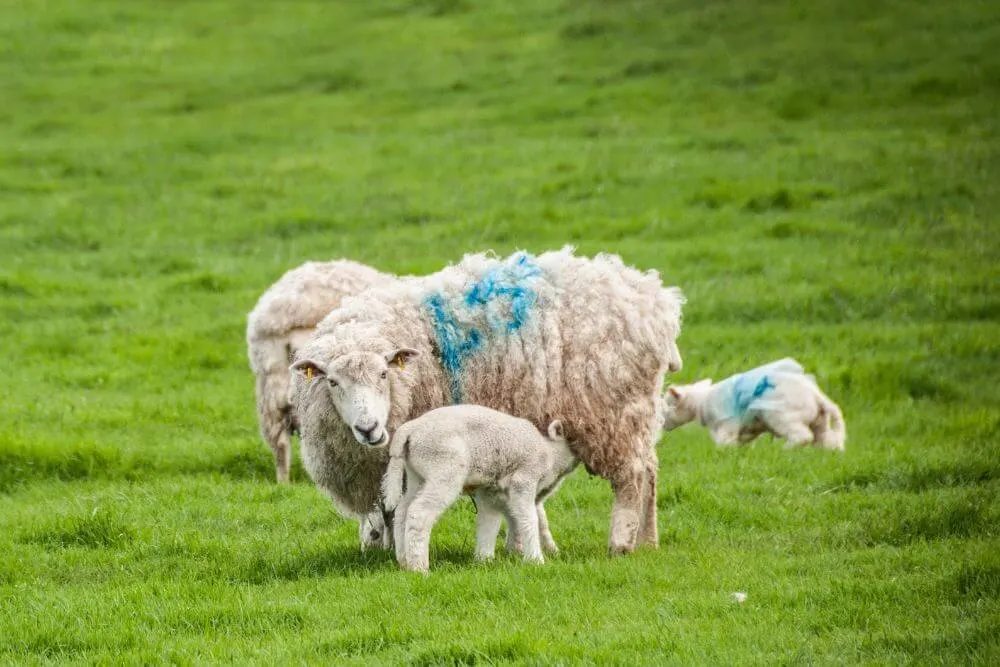
Milk is the nourishing substance mothers give their young and it’s intrinsically connected with the cycle of life and birth.
Sheep
Sheep commonly give birth around Imbolc, and either through their swollen pregnant bellies or their lactation may have even helped to name this particular ancient Celtic celebration.
Brídeóg, Bríd Óg or Brigid Dolls
The blessings of the Goddess Brigid and St. Brigid were seen as being very positive and a visit to the home around Imbolc was a good omen for the year. Offerings such as food, as well as a replica effigy were made to welcome this powerful female figure into the home.
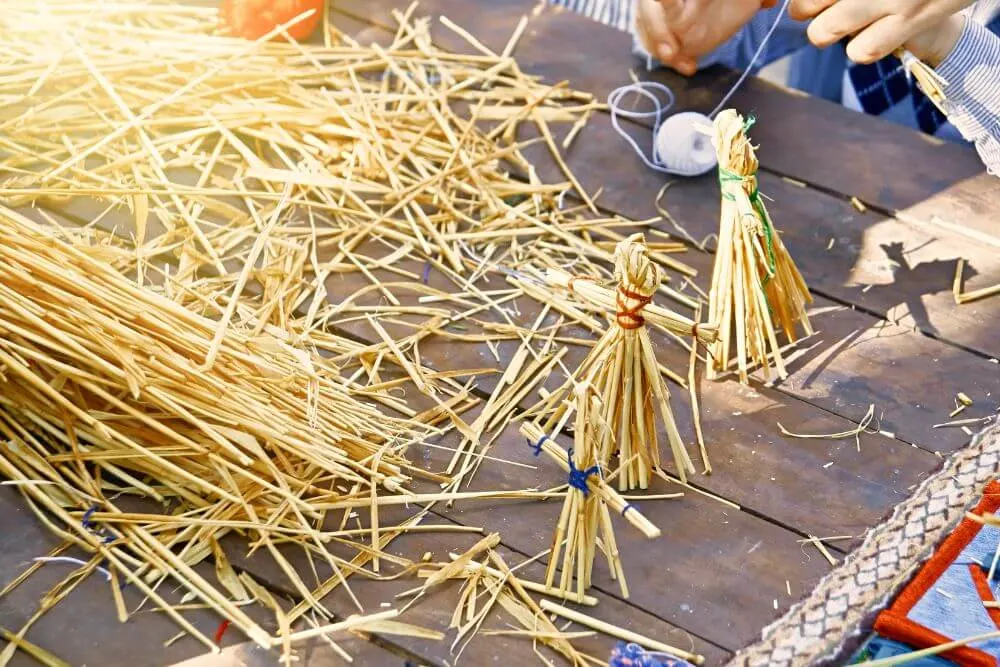
Brannock
Brannock, the oat flatbread that could be cooked in a pan over the hearth and eaten on the eve of Imbolc is another symbol associated with Imbolc and the flame and fire connection to the Goddess Brigid and Saint Brigid. It is particularly common in Scotland.
St. Brigid’s Crosses
To protect families and their possessions from fire, illness and other evil spirits, a Brigid Cross would often have been hung over the door to prevent any misfortune befalling the family.
What are the main Imbolc foods?
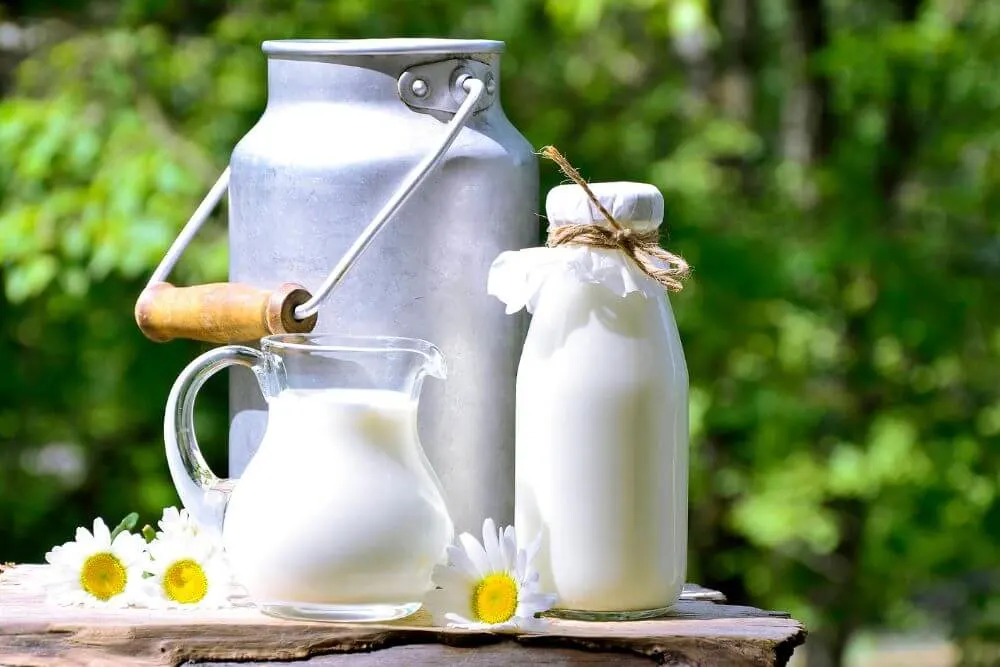
Dairy products, such as milk and butter, which have affiliations with Brigid the goddess and the saint would typically be consumed (if they were available) at this time.
Bread and cakes that could have been cooked over the hearth such as Brannock, were commonly eaten as part of the Imbolc celebration.
Other possible meals could have included the Irish dish Colcannon, which is made of potato and cabbage or kale.
What are the main Imbolc herbs?
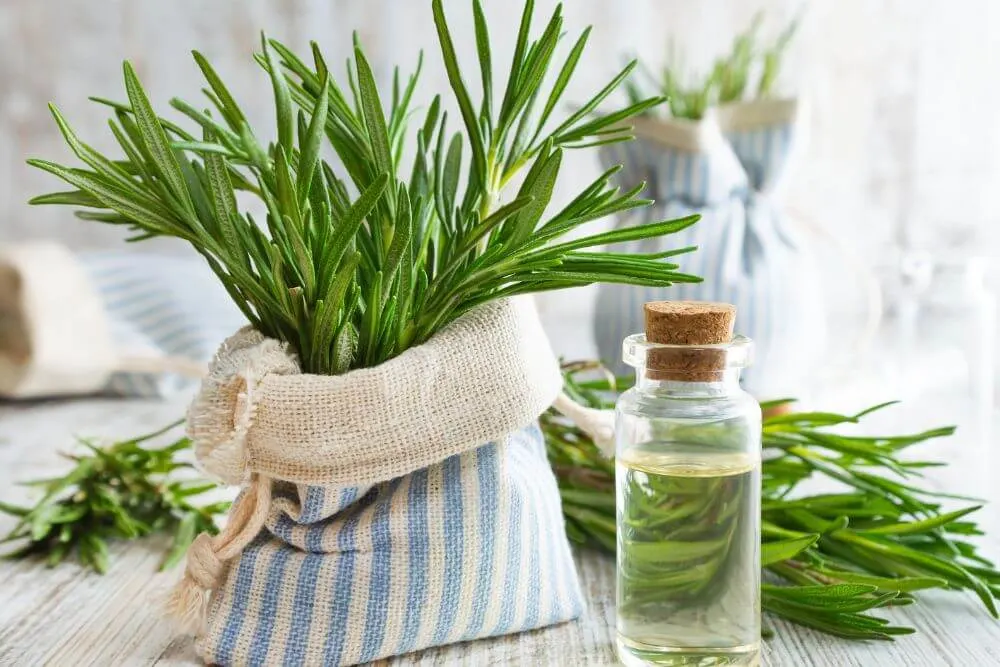
Rosemary is one of the most commonly mentioned herbs associated with Imbolc celebrations. The Goddess Brigid is also thought to be linked to the bright yellow dandelion flower. This common garden plant is edible, although some people may have skin reactions to the milky substance in the stem.
What are the Imbolc colors?
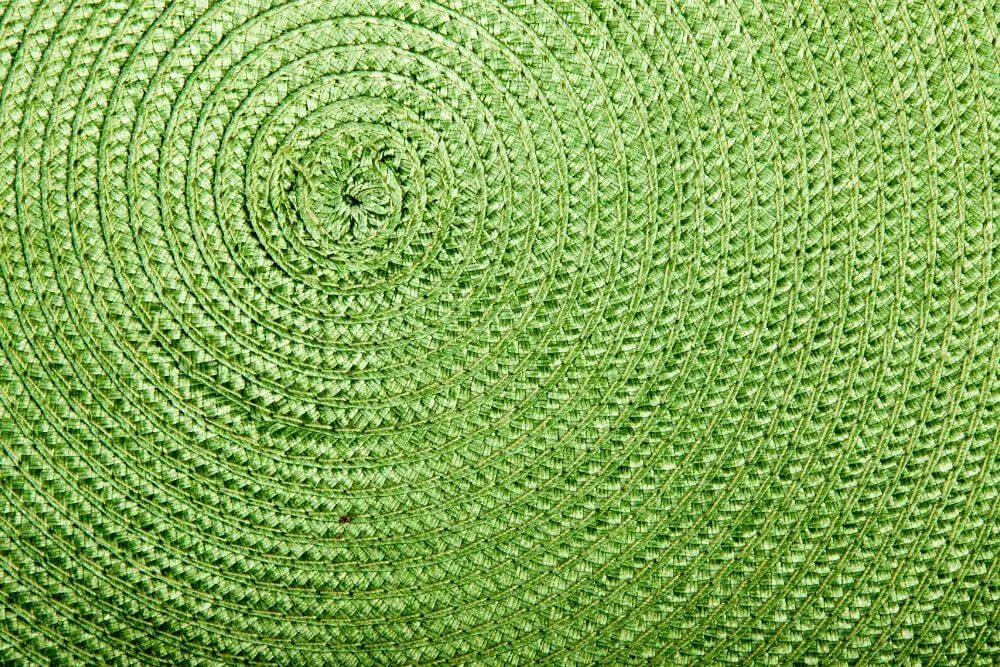
Imbolc is a time of spring growth and new beginnings in the natural world and therefore green is a common color associated with this time of year. It is also said to have been the color of the Goddess Brigid’s mantle or cloak.
There are many other supposed color associations with the Goddess Brigid and Saint Brigid. The most common colors being red, white and purple, but it is difficult to find much evidence to support this.
Irish Gods and Irish Goddesses
Discover more about the Goddess Brigid, the mother Goddess Danu and Áine the Goddess of Love and the many other fascinating Celtic Gods and Irish Goddess in our detailed guide. Another post that may interest you is the Celtic Tree of Life.
This post contains affiliate links. If you click on one of them, we might receive a small commission (at no extra cost to you). Thanks for your support!
